As a workout method that optimises fitness gains in a shorter amount of time, High-Intensity Interval Training (HIIT) has become increasingly popular. HIIT alternates low-intensity recovery intervals with brief, high-intensity activity bursts. Compared to conventional exercise regimens, this format enables people to push themselves, enhance cardiovascular fitness, and burn calories more effectively. It might be difficult to find time for extended workouts in the fast-paced world of today.
For both experienced athletes and absolute beginners, HIIT provides an approachable yet effective training approach with demonstrated advantages. However, because of its intensity and organised nature, beginning with HIIT may seem daunting. This post aims to give newcomers a thorough overview of how to begin HIIT, including information on the fundamentals, advantages, exercise varieties, and strategies for maximising the effectiveness of this intense workout.
Why Choose High-Intensity Interval Training?
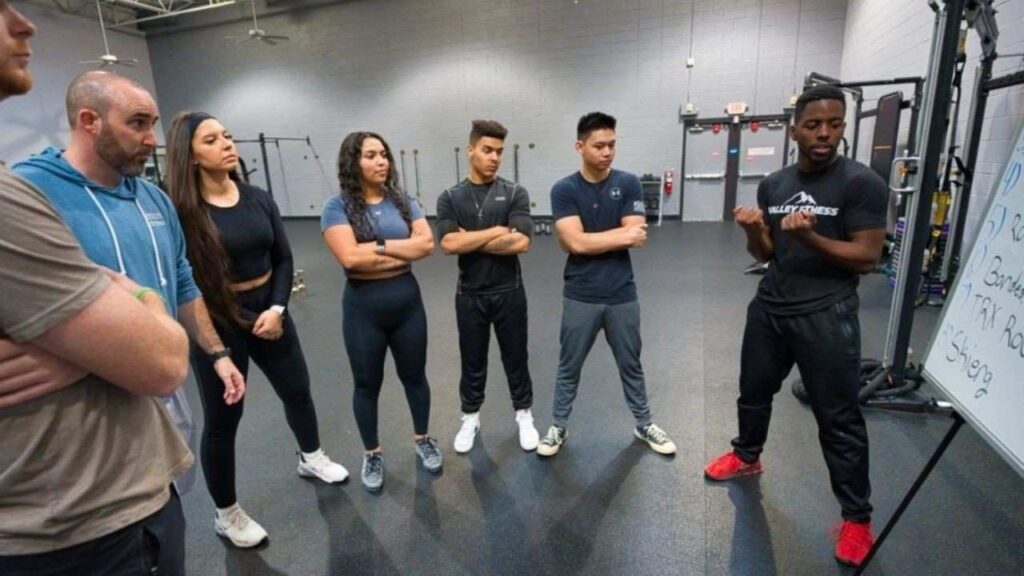
HIIT is based on scientifically proven techniques that maximise cardiovascular health, muscular tone, and fat loss in a shorter amount of time. Below are some core reasons why HIIT has become a preferred choice for many fitness enthusiasts.
Increased Fat Loss and Calorie Burn
HIIT workouts produce a “afterburn effect,” or excess post-exercise oxygen consumption (EPOC), by alternating periods of high intensity with active or passive rest. In contrast to steady-state cardio, this implies that the body continues to burn calories as it recovers after the workout, enabling a higher calorie expenditure.
Time Efficiency
HIIT workouts are perfect for people with hectic schedules since they can be finished in as little as 15 to 30 minutes. Compared to a regular training regimen, the shortened format allows for flexibility and convenience while still providing a quality workout in less time.
Better Cardiovascular Health
One of the best ways to improve cardiovascular health is through HIIT. Intense activity bursts interspersed with recovery periods teach the heart to recover more quickly and effectively, enhancing heart health and lowering the risk of cardiovascular disorders.
Increased Metabolic Rate
The afterburn effect raises metabolic rate in addition to helping burn calories. This can promote weight management objectives by having long-lasting effects on energy levels and calorie expenditure throughout the day.
Tone and Strength of Muscles
Bodyweight or light weights are used in many HIIT workouts, which can assist build strength and tone muscles. HIIT helps preserve lean muscle mass, in contrast to regular cardio, which can occasionally result in muscle loss if overdone.
Flexibility for Every Level of Fitness
HIIT activities are a great option for beginners because they are simple to adapt to one’s level of fitness. Anyone can begin and advance over time with bodyweight options or more straightforward versions of classic exercises.
HIIT Tips To Consider
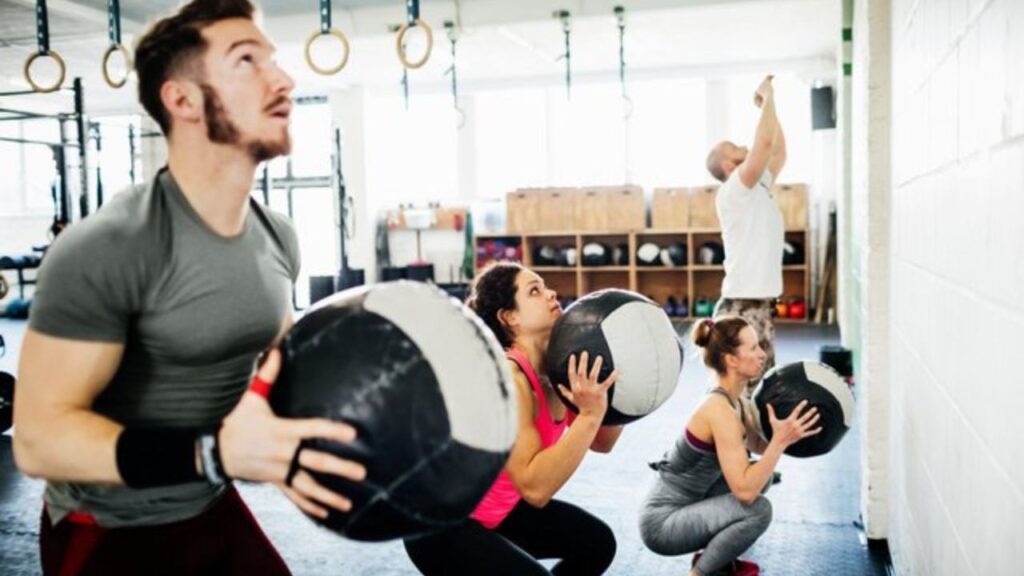
There are numerous ways that adding HIIT to your workout regimen might increase your level of fitness. There are a few things to think about if this is your first time working out or doing HIIT.
Start Slowly
HIIT is designed to be a more intense workout, so it’s important to pace yourself if you don’t want to burn out or put yourself at danger for injury. According to swift, varying the intensity also known as the speed or the amount of weight they lift.
During work or rest periods, overall workout duration, and number of exercises performed is one approach to ease into these workouts. Proceed at your own speed and advance when the individual is prepared.
Right Schedule
Aim for a total of 15 minutes every session on one or two days per week. You can gradually extend the workout to 30 minutes as the body adjusts. Swift advises including an additional day of HIIT in the total exercise regimen if it’s still looking for a challenge.
Rest Days
Rest days are crucial, particularly when engaging in high-intensity interval training. One will require more rest because this kind of exercise is taxing on the body. This helps muscles, joints, and the central nervous system heal and repair. This helps, better movement quality and a lower chance of injury will result from this.
Focus on Full-Body Movements
According to Anna Larsen, a certified trainer and proprietor of Fit Body Boot Camp in Idaho Falls, Idaho, you should concentrate on activities that work the full body at the current fitness level or just a little bit above it. Exercises that suit the bill include burpees, push-ups, mountain climbers, and squats and presses.
Aware of Overtraining
High-intensity interval training puts a lot of strain on your immune system, heart, and muscles. They can discover that they on the verge of overtraining if you’re doing too many HIIT sessions every week. Reduced performance, extreme exhaustion, restlessness, a rise in exercise-related injuries, irritability, and moodiness are some of the more prevalent warning signs to watch out for.
Beginner-Friendly HIIT Exercises and Routines
There are countless ways to design a HIIT routine. But for beginners, it’s essential to choose moves that are effective yet manageable. Here are a few foundational HIIT exercises.
Jumping Jacks
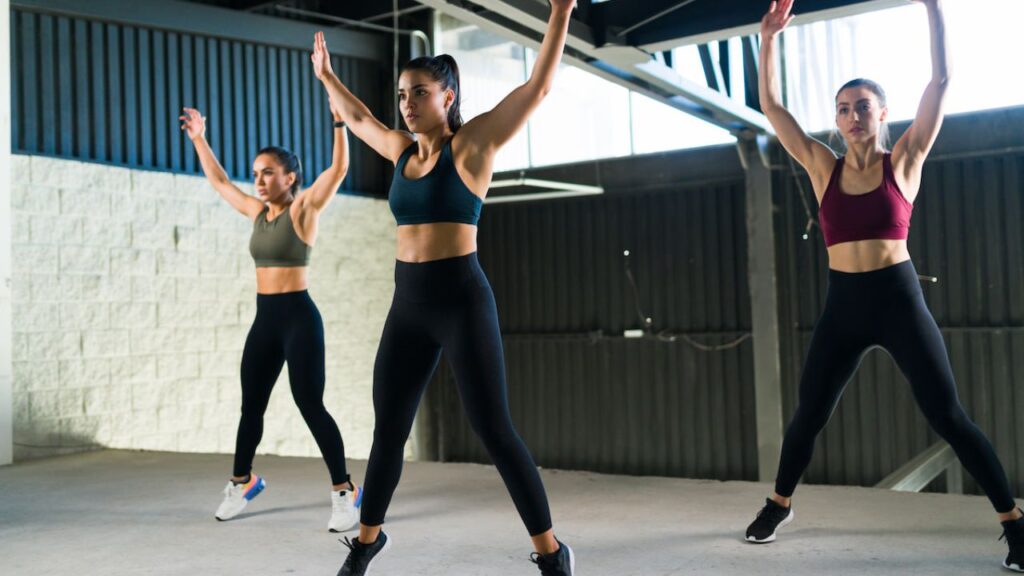
- Duration: 20–30 seconds
- Description: A great full-body cardio move, jumping jacks help to raise your heart rate and get your body moving.
- Rest: 15 seconds
Bodyweight Squats
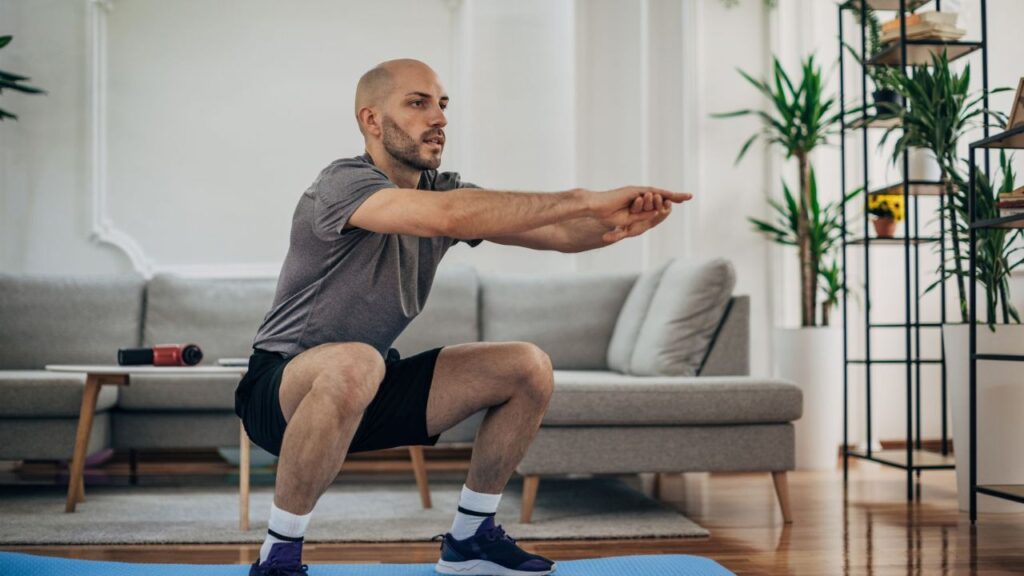
- Duration: 20–30 seconds
- Description: Works your glutes, quads, and core. Keep your chest up and lower yourself into a squat, ensuring knees don’t extend past your toes.
- Rest: 15 seconds
High Knees
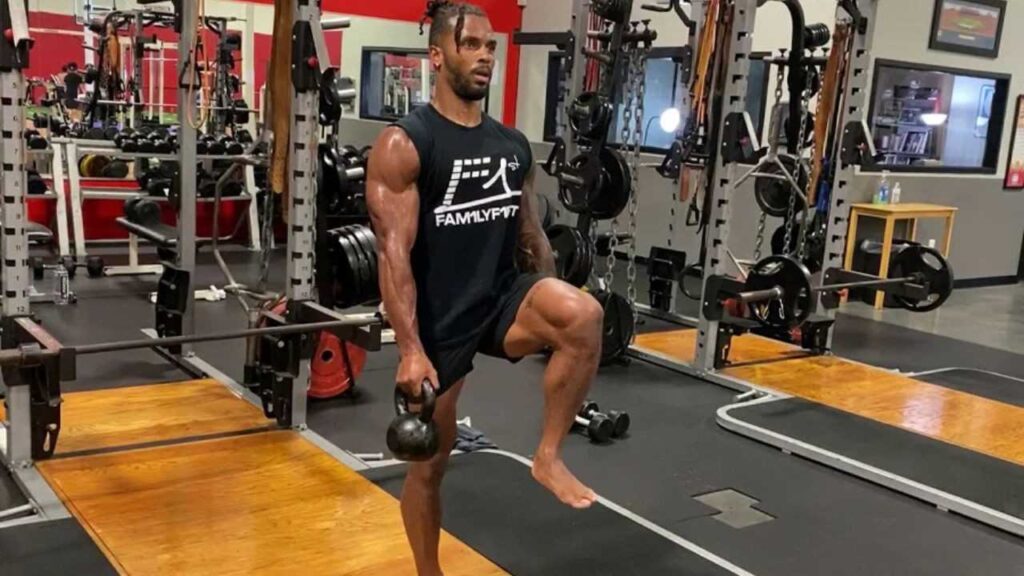
- Duration: 20–30 seconds
- Description: Engage the core and drive your knees up towards your chest while jogging in place. This move is excellent for cardio.
- Rest: 15 seconds
Push-Ups (Modified if Needed)

- Duration: 20–30 seconds
- Description: Builds upper body strength, particularly in the chest, triceps, and shoulders. Beginners can perform push-ups on their knees.
- Rest: 15 seconds
Mountain Climbers
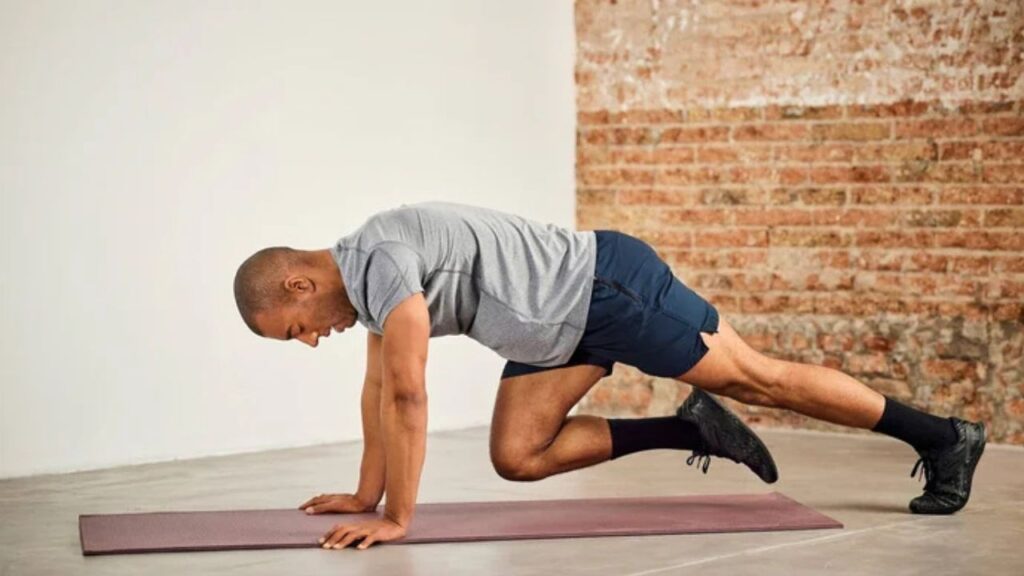
- Duration: 20–30 seconds
- Description: This core exercise also boosts cardio. Start in a plank position and alternate bringing each knee towards your chest.
- Rest: 15 seconds
Repeat this 3–4 times with 1–2 minutes of rest between rounds. Adjust the time for each exercise and rest as required.
Going Beyond the Basics
If someone is comfortable with the fundamental routines and exercises, they can add weights, increase the duration or intensity, or even try HIIT on specialized equipment like rowing machines, treadmills, or stationary bikes. Advanced HIIT programs frequently include kettlebells, dumbbells, and plyometric exercises such as burpees, box jumps, and kettlebell swings.
Begin The HIIT Adventure Right Now
Beginners can start their fitness journey with ease through the accessible and effective approach of high-intensity interval training (HIIT). With numerous benefits—improved cardiovascular health, fat burning, and muscle toning—HIIT serves as a valuable addition to any exercise routine. The key to succeeding with HIIT is to begin gradually, set realistic goals, and move at a comfortable pace.
With just a few brief sessions each week, HIIT can significantly enhance body composition, strength, and endurance, transforming the way individuals approach training. Embracing the challenge and staying consistent can help anyone reach their fitness goals through the power of HIIT.


